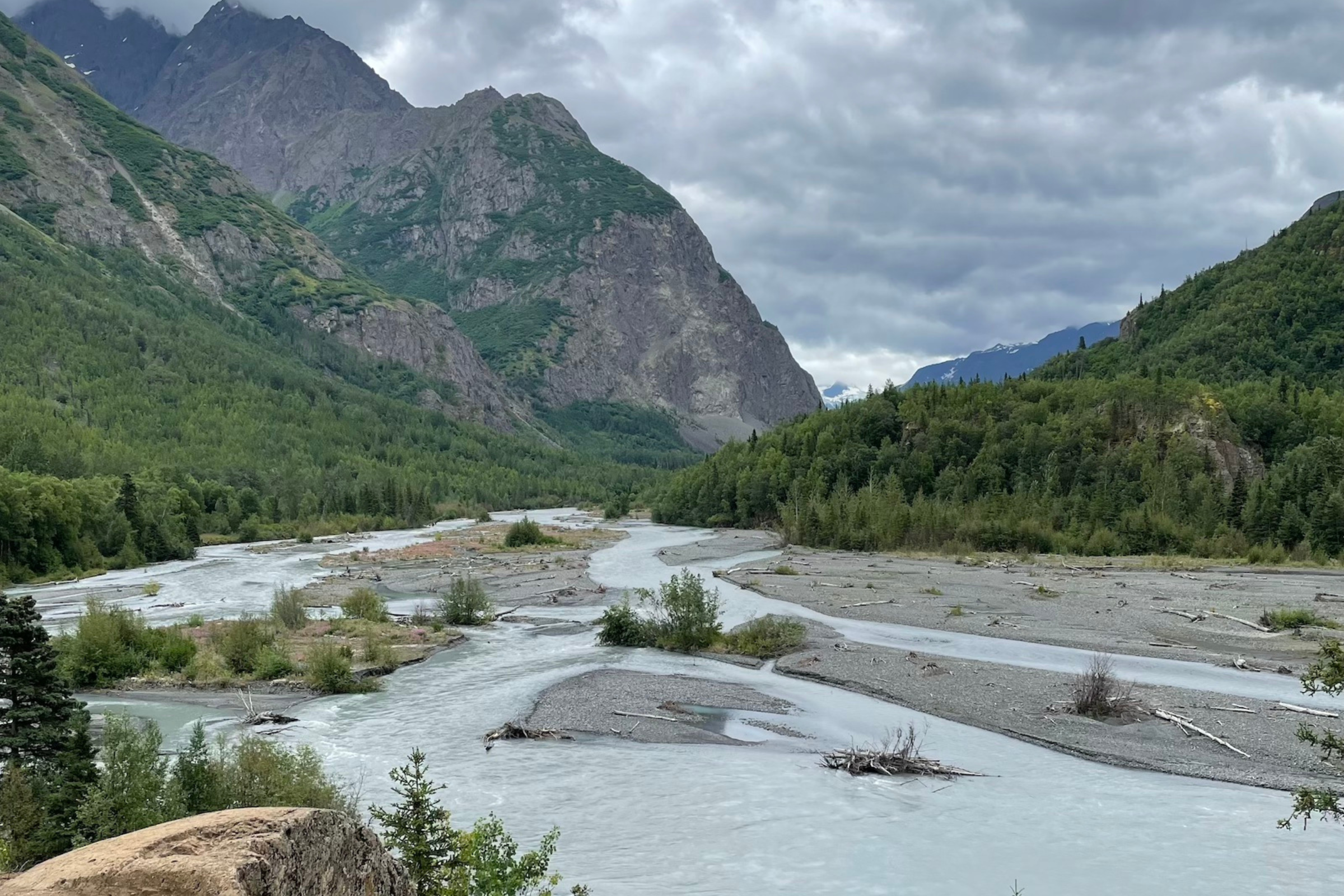Answering the question, “What should I eat?” seems to only get more complex as time goes on. With new products, new supplements, new superfoods, new diets hitting the market all the time, it’s hard to know what nutrition plan is going to work best for you. Add in the challenge of having to fit a bunch of food in your pack for an extended backpacking trip, and you find yourself in a potentially dumbfounding situation.
At Heather’s Choice, we aim to keep nutrition as simple as possible. We rely on whole food ingredients for the development of our recipes, and we don’t strongly advocate for any one diet strategy. We have team members who thrive on a vegetarian nutrition plan, while others border on the line of carnivorous. Regardless of the specific diet you follow, there are a few basic principles we can apply to your nutrition plan at home, or in the backcountry.
- Know your caloric baseline
- Strive to eat enough protein
- Eat quality fats
- Mind your carbohydrates
- Get some digestive support

Know Your Caloric Baseline
This might sound overly simplistic, but many of us have no idea how many calories we eat on any given day. If you don't know how much energy your body needs to perform everyday tasks, it becomes infinitely harder for you to calculate how much food you need on a backcountry trip.
To help you plan your menu for a backpacking trip, I would recommend taking the time to establish your caloric baseline, so you can then plan accordingly from there.
As an example, you might assume that you eat an average of 2,000 calories per day.
What happens if you come to find out you actually consume closer to 2,400 in a given day at your maintenance weight? If so, then your 2,500 calorie per day backcountry meal plan might come up short, and could result in a less than enjoyable trip.
By finding your maintenance calories, you can make a more informed decision about how many calories you need to pack. To take it one step further, having a good idea of your macronutrient breakdown day to day will help you determine how many carbohydrates, proteins and fats you need as well, which we will cover next.
Strive To Eat Enough Protein
Again, these principles apply whether you’re eating at home or in the wilderness. When I was working as a sports nutritionist and eating psychology coach, nine times out of ten, I would find that my clients weren’t eating enough protein. When we’re not eating enough good quality protein, we’re not giving our bodies the essential amino acids that it needs on a daily basis.
Essential amino acids are exactly that, they’re essential! Your body needs these in order to maintain your lean muscle mass, or build new muscle tissue. Skimping on protein as an athlete is like trying to build a new house in a neighborhood without any supplies. You have to cannibalize existing houses in order to get the supplies you need to build anew. Imagine your body having to break down its hard earned lean muscle tissue to maintain basic metabolic functions, such as hormone production, along with maintaining proper pH and fluid balance.
As a baseline, I would recommend eating one gram of protein per pound of lean body mass at home, or on a backcountry trip. This is easier said than done, and requires attention to the amount of protein in your meals and snacks.
Eat Quality Fats
The old adage of fats make you fat has long been dispelled in the world of nutrition science. In fact, fat can be one of the best fuel sources for your body to use during low intensity activity, as well as for longer endurance efforts such as backpacking.
Your body can use protein, carbohydrates or fat as a fuel source. However, as we mentioned before, breaking down protein for fuel is metabolically expensive, and not your most efficient source of energy. In contrast, your body can burn carbohydrates for fuel quickly and easily, which is why many athletes put such a strong emphasis on having quick digesting carbohydrates in their backcountry meal plan. The problem with carbohydrates is that…you can’t pack quite as many of them in your body’s fuel tanks. Your body can store approximately 600 grams of carbohydrates in the form of glycogen, which equates to about 2400 calories. That’s quite a bit, but in sharp contrast, how many calories worth of fat do you think your body can store as potential fuel? Well, depending on how much body fat you carry, it can be a lot! Just in your muscle bellies in the form of triglycerides, your body can store 300 grams of fat as fuel, which is equivalent to 2700 calories. As you likely already know, fats are simply a more space efficient and dense form of calories, whether that is intramuscular, or in your pack.
Mind you, the quality of fats you eat will have a profound impact on your performance day to day and on the trail. The standard american diet is typically full of pro-inflammatory fats, also known as omega 6s. These fats can create an environment of low grade inflammation in the body systemically. That means your body will be constantly battling the inflammation that already exists, rather than focusing on repairing your joints and muscles from the wear and tear of exercise. Yes, it’s as bad as it sounds.
Omega 6 fatty acids are found in common cooking fats, such as canola oil, soybean oil, peanut oil, and other readily available vegetable oils. These fats are cheap from an economic standpoint, and again they are easy to procure for many food businsses. However, the downside of these fats is that they are highly volatile and prone to oxidation. Without going too far down the rabbit hole of nutrition science, eating oxidized fats creates free radicals in the body, which can wreak havoc on your cells and inevitably your immune system. When you’re putting your body through the stress of intense exercise, you do not need to layer on additional metabolic stress from the food you are eating.
Paying attention to the quality of fats you’re eating, and striving to reduce the amount of pro-inflammatory omega 6 fatty acids in your daily nutrition plan, will pay dividends over a lifetime.
Mind Your Carbohydrates
As we mentioned before, carbohydrates are cheap, readily available, and a quick source of energy for your body to use. The problem arises when our body becomes wholly dependent on carbohydrates (aka sugar) for energy.
Remember when we discussed the seemingly infinite amount of calories your body can store as fat? Your body isn’t super keen on tapping into that fuel source in the presence of simple carbohydrates. Your cells will take the past of least resistance to get the energy they need to fuel you up the mountain, so when you’re intaking simple sugars, your body will burn those preferentially over your own fat stores, just because it’s easier!
If you feed your body simple sugars regularly, you train your metabolism to rely on these quick sources of energy. Have you ever had a meal that was mostly simple sugars, like a croissant, and then found yourself reaching for more food about two hours later? Your body was able to digest and assimulate that food quickly, and as your blood sugar starts to crash from the sharp rise and fall of insulin, you will find that you have to simply keep “topping of the tank” to keep your energy levels high. Its kinda of like feeding candy to a kid…the inevitable blood sugar crash and subsequent temper tantrums is a real thing.
To avoid sharp spikes in your blood sugar, and to train your body to use fat and carbohydrates for fuel, it behooves you to focus on eating complex carbohydrates from whole foods sources, and to eat balanced meals that contain all three macronutrients; protein, carbohydrates and fat. Again, the focus is on quality, and the quality of carbohydrates you eat will have an immense impact on your energy levels overall.
Get Some Digestive Support
One of the main things we hear from our customers is stories of their bowel movements (seriously). People love to write in and tell us about the quality of their bathroom experience in the backcountry. The truth is, going on wilderness trips introduces a whole lot of novelty to your digestive system. You’re out in the elements, you’re likely getting some dirt (read: bacteria) under your finger nails, you’re eating foods that you normally don’t eat, you might be drinking questionable water, and you’re putting your body through the stress of physical exertion. Believe it or not, our stomachs and digestive systems are relatively sensitive, and introducing all this newness at once is a recipe for changes in your bodies *ahem* routine.
To give you the best chance of going number two in the woods, I would recommend taking some sort of digestive support. This could be in the form of a digestive enzyme, a full spectrum probiotic, probiotic rich foods, etc. If you know you’ve eaten or drank something questionable, having a tool in your tool kit like activated charcoal can help your body move thst stuff along. If going to the bathroom in the wilderness is historically challenging, having a supplement like magnesium at night can also help keep things moving.
As you can see, we’ve only merely scratched the surface on all things nutrition, but my hope is that this gives you five very actionable ways that you can improve your backcountry meal plan. Better yet, you can implement these five tweaks in your daily life, and notice a difference in your energy, mood, and performance right away.
Heather Kelly is the founder and CEO of Heather’s Choice. She was an NCAA National Champion and CRCA/Pocock All-American in women’s rowing, and hold a degree in evolutionary nutrition. Heather is also a certified eating psychology coach and has coached hundreds of athletes on developing a nutrition plan for optional performance and a healthy, satisfying relationship with food.
Heather lives in Anchorage, Alaska with her boyfriend and business partner Brad, along with their dog Jango. You can likely find her playing with food, building her urban homestead, or rafting rivers in her spare time.



